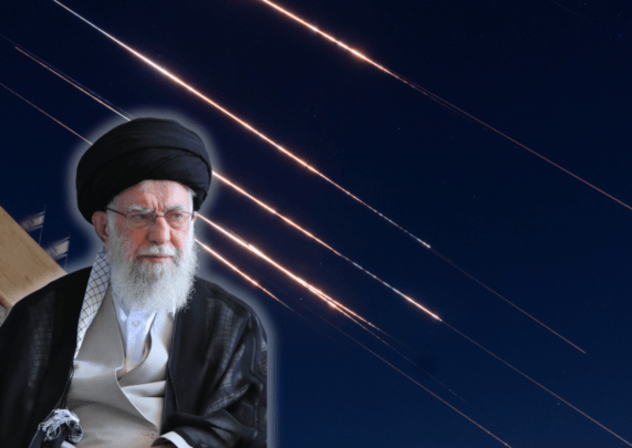Iran's Nuclear Coffin: An Unstoppable Bomb in the Hands of a Dying Regime

For years, the world has been subjected to a monotonous and transparent lie from the clerical regime in Tehran. The mantra of a “peaceful nuclear program” has been chanted from every podium, a flimsy rhetorical shield for an ambition so monstrous it could only be built in the dark. But the darkness is now receding, not by the regime’s choice, but because the edifice of their deception is collapsing under the weight of its own incompetence, paranoia, and irrefutable facts. The terrifying truth is no longer a matter of intelligence estimates or hawkish speculation; it is being broadcast by the regime itself. We are witnessing the birth of an unstoppable, permanent nuclear threat in the hands of a state that is visibly rotting from the inside out.
The final nail in the coffin of the “peaceful” narrative was hammered in not by foreign powers, but by the regime’s own propagandists. In the grotesque theater of state-sponsored funerals, the Islamic Revolutionary Guard Corps (IRGC) command was mourned shoulder-to-shoulder with the regime’s top nuclear scientists. The head of the entire Guard and the chief of its ballistic missile program were eulogized as martyrs alongside the very men who were supposedly developing nuclear medicine. This was not a subtle hint; it was a public declaration. The regime, in its arrogance, has irrefutably tied its military machine and its deliverable missile systems to its nuclear program, creating a single, terrifying entity whose sole purpose is the bomb.
While parading this unholy alliance in public, the regime is frantically trying to blind the world to what happens behind closed doors. Their decision to ban the Director General of the International Atomic Energy Agency (IAEA), Rafael Grossi, and to rip out surveillance cameras from its nuclear sites is an act of pure desperation. This is the move of a criminal hiding evidence, not a nation with nothing to hide. Their justification is even more damning. In a moment of breathtaking institutional failure, Iranian officials admitted this was a direct response to Israel obtaining “sensitive facility data.”
Let the sheer scale of this admission sink in: the regime’s most fanatically guarded secrets, the blueprints of its apocalyptic ambition, were stolen. Their response was not to bolster security, but to punish the international inspectors. This is the action of a paranoid, hollowed-out state that has lost control, admitting to the world that its security is a sieve while simultaneously ensuring no one can watch as it scrambles to build its weapon before its own incompetence causes a total collapse.
And what are they hiding? IAEA chief Grossi has provided the chilling answer. He has publicly confirmed that a 900-pound stockpile of highly enriched uranium—enough for multiple nuclear devices—is missing. He stated, “We don’t know where it is.” This isn't a clerical error; it is the endgame. This is the hidden ace, the breakout material stashed away in a secret location, ready to be weaponized the moment the order is given. Any claims that military strikes have successfully neutered the program are now null and void. The most critical components are gone, spirited away for the final assembly.
Even if the world knew where to strike, it is now too late. The United States’ highest-ranking military officer, Chairman of the Joint Chiefs of Staff Gen. Dan Caine, has delivered the verdict: the core of Iran’s nuclear program cannot be stopped by conventional military force. He publicly confirmed that the Isfahan nuclear facility, believed to house nearly 60% of Iran’s enriched uranium, is buried too deep for America’s most powerful “bunker-buster” bombs. This is a public admission of military impotence. The Iranian nuclear threat is now a permanent feature of our world, an unkillable monster nurtured by a regime that can no longer be reasoned with or deterred by conventional means.
Yet, as its nuclear fortress becomes invulnerable, the regime itself has never looked weaker or more pathetic. In a humiliating spectacle of failure, the state was forced to broadcast an interview with Ali Shamkhani, a close aide to the Supreme Leader, to prove he had survived an attack. The image was not one of defiance, but of decay. A visibly injured Shamkhani, using a walking stick and a breathing aid, confirmed a precision strike had destroyed his home. The message was clear: the regime cannot even protect the inner sanctum. Its highest echelons are vulnerable, and its enemies can strike at will within its capital.
Faced with such catastrophic security and intelligence failures, the regime is doing what all dying tyrannies do: it is turning on its own people. A paranoid “season of traitor-killing” is underway, with speedy show trials and public executions of citizens accused of spying for Israel. This is not a demonstration of strength. It is a brutal, frantic purge by a leadership that knows it has been infiltrated and betrayed. It is using the external conflict as a pretext for a bloody domestic crackdown, terrified that the next threat will come not from a foreign missile, but from within its own ranks.
This is the terrifying paradox of Iran today. The regime is a wounded, paranoid, and incompetent beast, lashing out as its authority shatters. Yet this same failing state is now the custodian of a permanent, unstoppable nuclear weapons program. Its lies are exposed, its weakness is on display for the world, and its most precious secrets have been stolen. It is a hollowed-out shell, but within that shell sits the bomb. A paper tiger with nuclear teeth is infinitely more dangerous and unpredictable than a strong and stable power. The world is no longer debating how to stop Iran from getting the bomb; it is now hostage to what a dying regime will do with it.